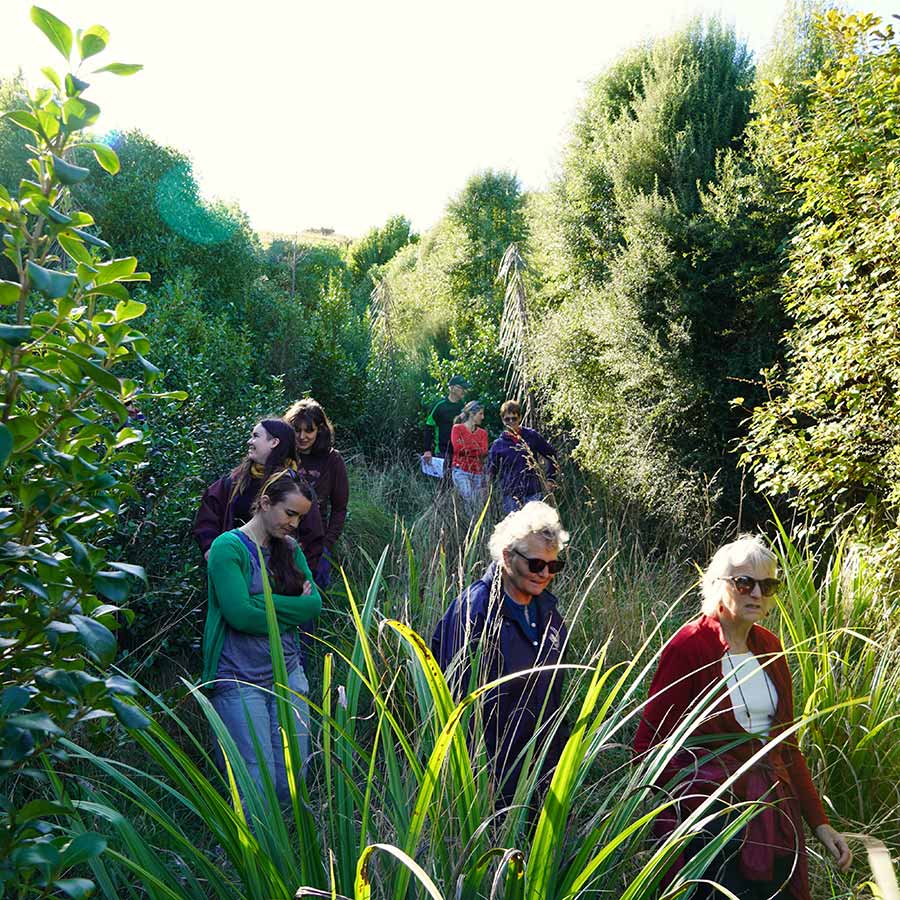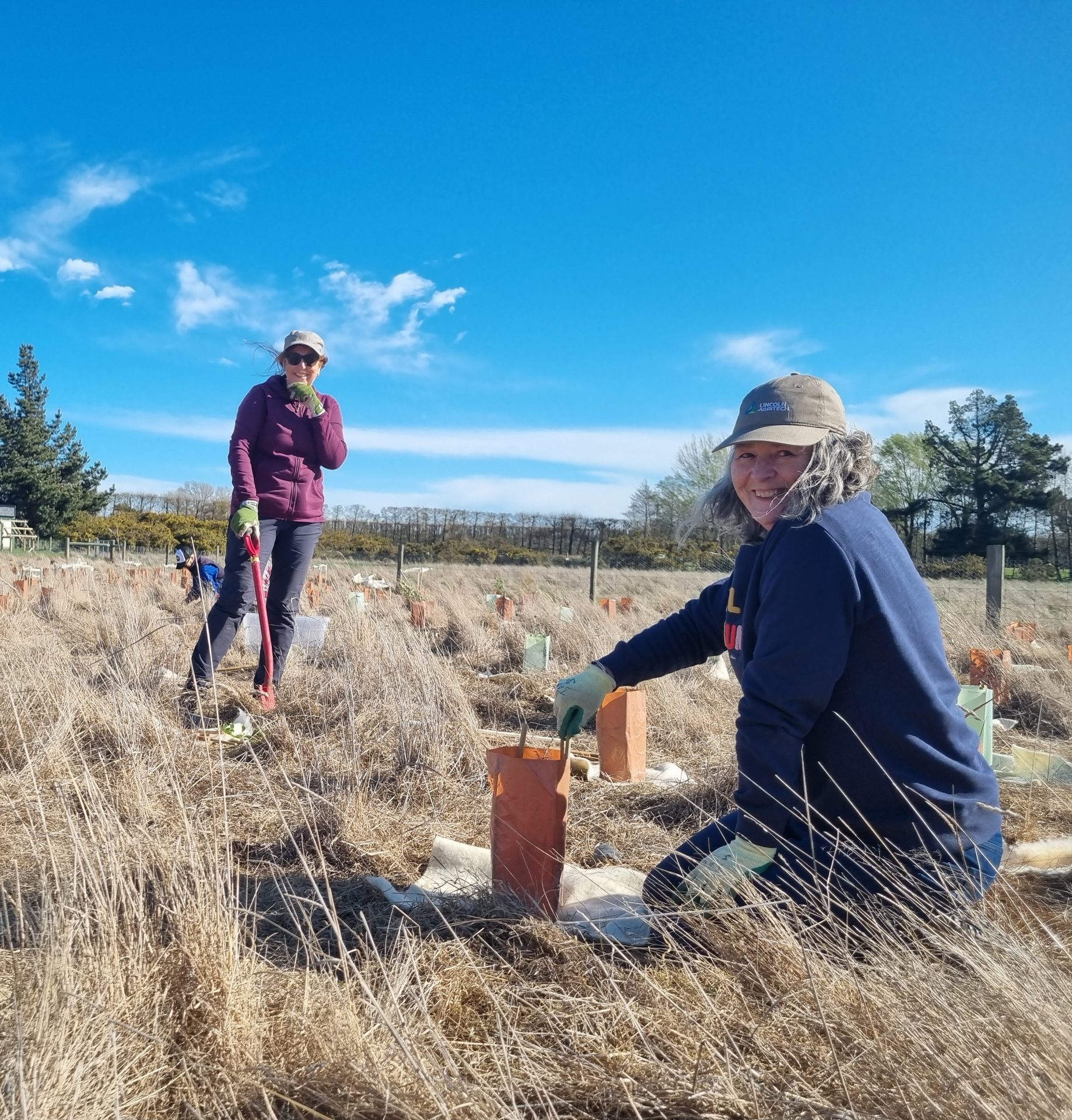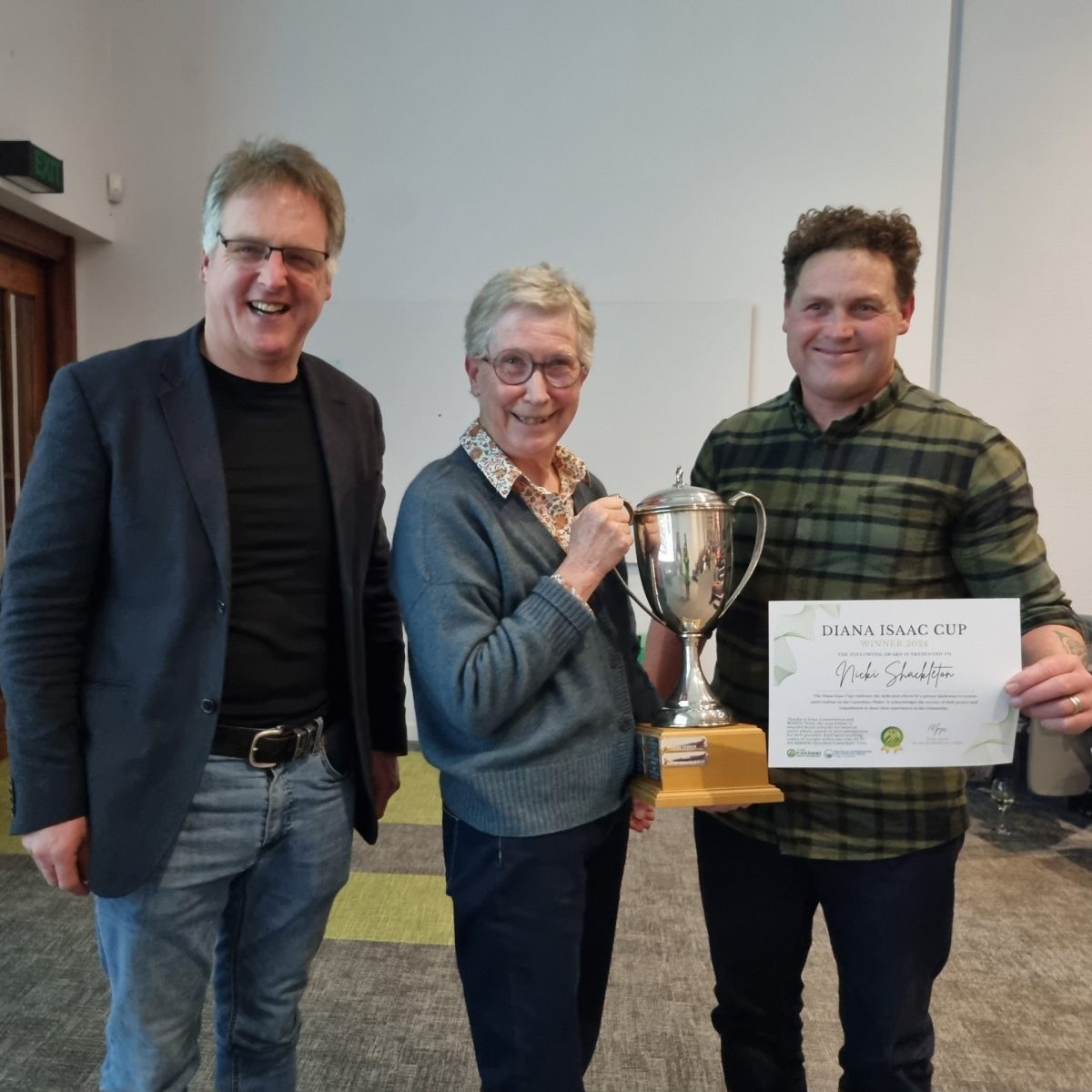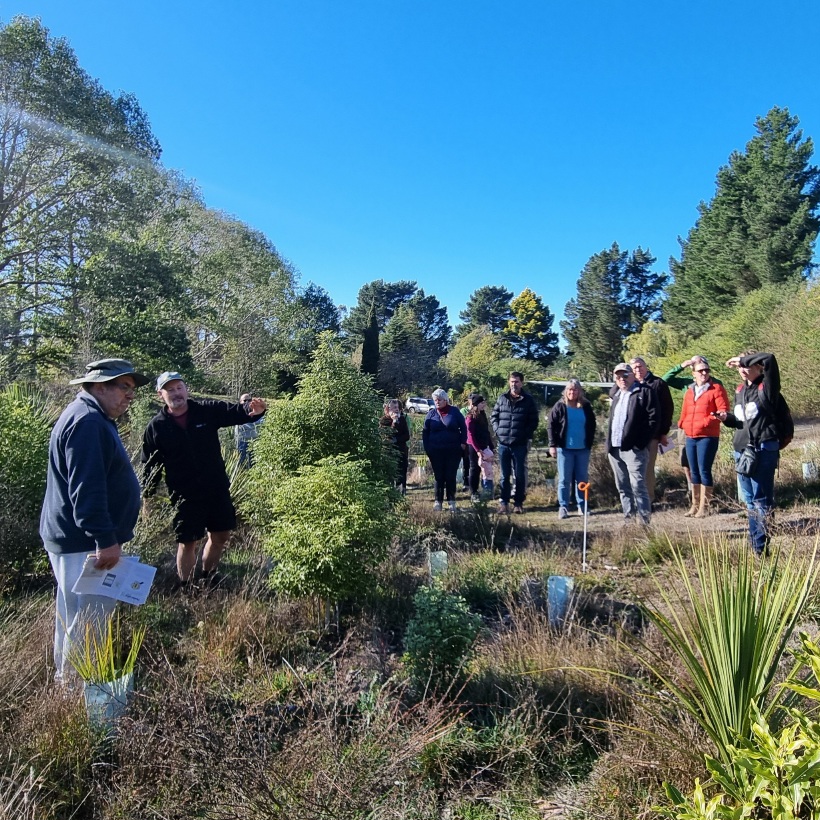This year our annual Greendot tour took in two established sites in the Tai Tapu area. 25 attendees were guided through the sites by Te Ara Kākāriki trustee and ecologist Mike Bowie, as well as hearing from the landowners about their experiences.
Pieta and Daryl first learned about Te Ara Kākāriki when helping at their children’s school planting event which was a Kids Discovery Plantout Day. This led to creating their own Greendot on their property in 2016, when 1000 seedlings went in with the help of volunteers. Several thousand more have been added since then, and the site is flourishing. The birdlife which has been attracted is awesome, with a friendly fantail accompanying us on the tour and bellbirds now regular visitors too. Although they found planting quite therapeutic, the maintenance really does take some effort. It’s been well worth it though, with going for a walk through the planted area being so good for the mind. On a practical level too the planting is important as it helps to hold the hillside together. Pieta and Daryl’s goal is to keep planting as much as they can, with lots of bits to fill in.
Mike highlighted a healthy Muehlenbeckia complexa plant, which the New Zealand copper butterfy larvae feed on and need to survive. Commonly found in the Port Hills, Mike is on a mission to encourage the copper butterfly into Lincoln. Lincoln University recently planted muehlenbeckia, and within six months a copper butterfly had been sighted there for the first time in many years. Another invertebrate found on Muehlenbeckia complexa is a native aphid, of which there are very few.
At our second site, landowner Andrew has over 14,000 square metres of his property planted in natives now across two main areas.
After some early challenges involving relocating tall species planted too close to a boundary fence, ten years on the Greendot is now well established and regenerating. Andrew is grateful for Te Ara Kākāriki’s help including the volunteers who planted there, and is looking forward to carrying on planting on his property.
Gathered in a small clearing amongst the trees and shrubs, Mike pointed out visible evidence of the cabbage tree moth. As cabbage trees are the only source of food for the moth larvae, they very much rely on the plant. In total ten endemic species feed solely on the cabbage tree, while close to 100 different species have been seen or found on cabbage trees. Kowhai and flax similarly host a variety of invertebrates such as the kowhai moth, highlighting just how important looking after each individual plant species is.
Having brought along some New Zealand mistletoe with berries from Mahoe Reserve, Mike then explained and demonstrated how to place the squeezed berries onto a host plant, mirroring one way which birds can spread it by wiping their berried beaks on plants. The best host plants are vigorous and located in open sunny areas with coprosma usually being suitable. Manually introducing species such as Ileostylus micranthus is called enhancement planting and can be done once the original planting is more established. Ideally these species would be introduced naturally, but often there are no seed sources nearby or birds that naturally spread them. Other species that can be introduced for enhancement include kawakawa (Piper excelsum), native jasmine (Parsonsia heterophylla) and native clematis (Clematis paniculata).
Thank you to everyone who came along to our tour this year. We look forward to sharing some of our upper catchment sites at the other end of the Selwyn District next autumn.
We would also like to take this opportunity to thank Mike for sharing his passion and knowledge with us on the Greendot Tour and for his contributions as a trustee over the last ten or so years.
Mike has accepted an exciting new position in Rarotonga so will be taking a break from Te Ara Kākāriki. We look forward to hearing about the fascinating Rarotongan invertebrate life and wish him well on his travels.





